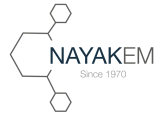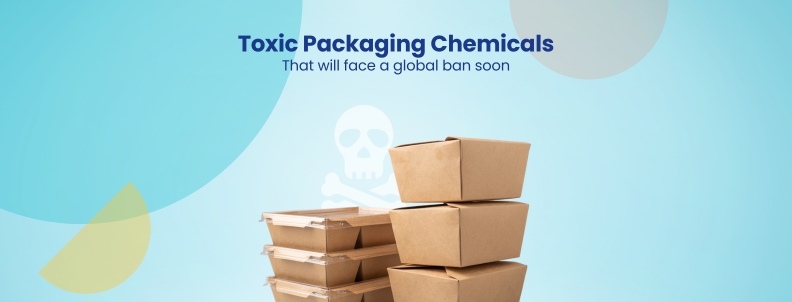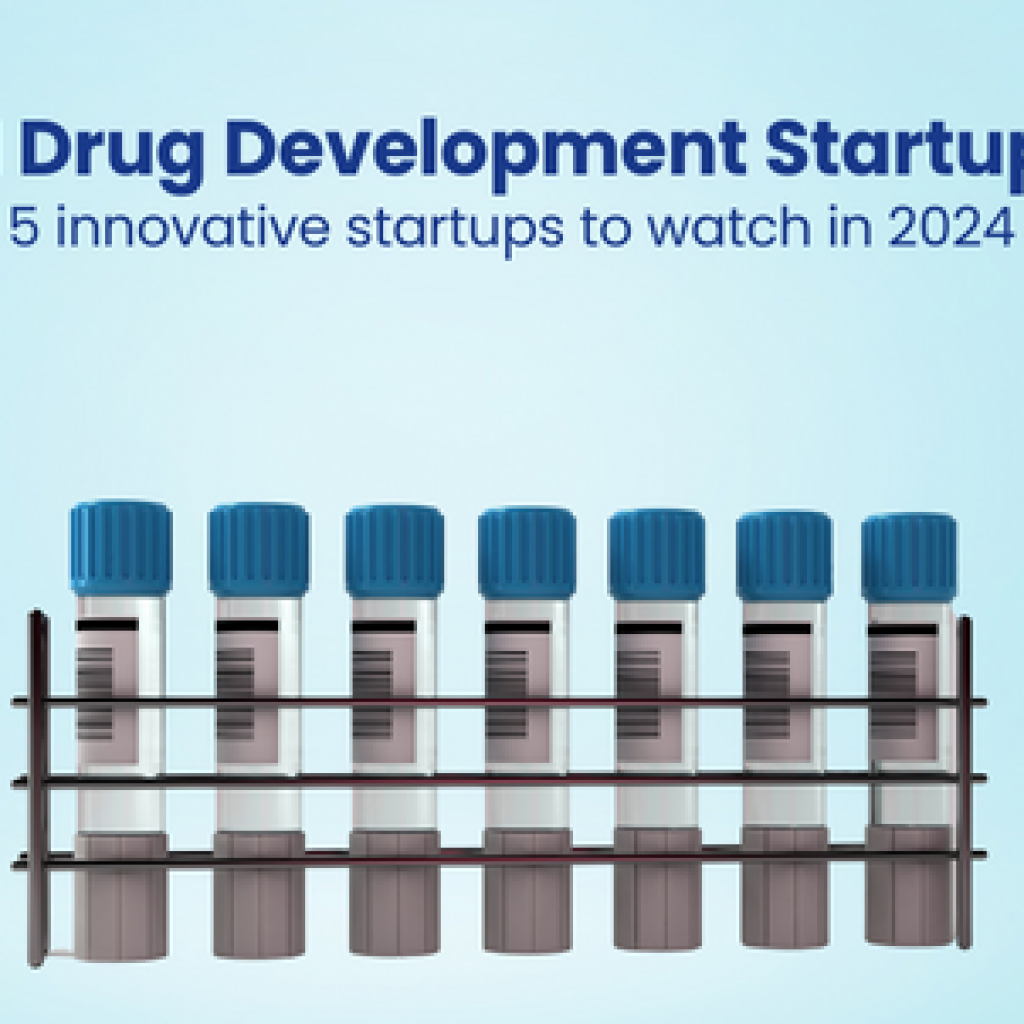Nearly two-thirds of paper takeout containers from the US’s largest grocery stores and 11% of bakery and deli papers contained elevated levels of fluorine. This suggests their probable treatment with PFAS.
PFAs didn’t become a global issue until multiple studies drew attention to potential health risks associated with PFAS chemicals in food packaging.
In response, the US has banned PFAS in various product applications. Meanwhile, similar actions are expected in the EU and other countries.
This urged us to conduct a comprehensive analysis to identify other potentially harmful chemicals used in food packaging that might face restrictions similar to PFAS. The examination focuses on critical factors such as biodegradability, leaching tendencies, health implications, and the current regulatory environment.
Curious about what’s in store for the packaging industry in the coming years? Our comprehensive report on Packaging Industry trends for 2024 has all your queries covered.
Simply fill out the form below to download your copy.
Toxic Packaging: Chemicals that will soon be banned
| Chemical Compounds/ Parameters | Government’s Action | Biodegradable | Hazards | Leaching |
| Phthalates | FDA has limited the use of phthalates in certain consumer products, such as food contact materials. But there is not a complete ban yet. | Yes | Endocrine disruptors | Developmental issues | Decreased fertility | Obesity | Asthma. | Yes |
| BPAs | EU has banned the use of BPA in food packaging for children under three years of age. | Yes | Cancer development and progression. | Yes |
| Glycol | FDA has approved ethylene glycol for use only as a component of packaging adhesives. | Yes | Affects multiple organs. | Yes |
| Perchlorate | FDA denied a request by the Environmental Defense Fund to challenge its decision on perchlorate use in food packaging. Soon, the pressure on the FDA could increase, leading to an ultimate ban. | Yes | Brain damage | Yes |
1. Phthalates
Ortho-phthalates, often called “phthalates,” are chemical compounds in plastic products. Polyvinyl chloride (PVC), commonly known as vinyl, is a prevalent host material for these compounds. Their primary function is to enhance flexibility and reduce brittleness in the plastic, a process commonly known as “plasticization.”
Specific phthalates are also used in food packaging or in limited instances of food contact. For example, they are used as ingredients in adhesives, lubricants, and sealants.
Indicators suggesting its prohibition:
- Currently, the FDA permits the use of nine phthalates in scenarios involving contact with food items. Eight of these phthalates serve as plasticizers, while one functions as a monomer for polymer production in food contact materials. It’s important to note that adding phthalates directly to food is not approved.
- The EU has taken proactive measures to reduce its citizens’ exposure to phthalates known to pose health risks.
- DEHP, DNBP, DIBP, and BBZP are prohibited in all toys and childcare articles, while DINP, DIDP, and DNOP are prohibited in toys and childcare articles intended for oral contact.
- Cosmetics have banned the use of phthalates classified as harmful to reproduction.
- Furthermore, the European Union is establishing legal limits for the concentration of specific phthalates (DEHP, BBZP, and DNBP) in materials intended for food contact.
Alternates for Phthalates
The global bio-plasticizers market reached a valuation of $1.3 billion in 2020, with a projected growth of $2.1 billion by 2030, demonstrating a steady compound annual growth rate (CAGR) of 5.31% from 2021 to 2030.
Among the various types, epoxides and glycerol esters are expected to show the highest CAGR during the forecast period due to their exceptional characteristics. This included non-toxicity, high efficiency, enhanced heat stability, reduced volatility, and more.
Furthermore, bio-plasticized films and sheet coverings find applications in packaging diverse products, including various foods and pharmaceuticals like pills and tablets, indicating an expanding presence across all food industry segments. (Source)
NIST’s studies confirm DINCH as a better alternative to phthalates

A research team from NIST (USA) conducted a four-year study in which they collected urine samples from 100 women. Subsequent analysis of these samples detected the presence of DINCH (di-isononyl cyclohexane-1,2-dicarboxylate) metabolites. The results showed that one specific DINCH metabolite, OH-MINCH, was present in 98% of the urine samples. Additionally, the researchers found no evidence suggesting that DINCH metabolites disrupted the regulation of specific hormones. (Source)
NAYAKEM focuses on benzoate-based phthalate alternatives

Dibenzoate plasticizers, known for their excellent solvent properties, reduce processing durations and lower processing temperatures. In multiple assessments, these compounds have demonstrated a strong track record of human safety and environmental friendliness.
Drawing on these characteristics, NAYAKEM, an India-based chemical manufacturer, has introduced a comprehensive line of phthalate-free plasticizer products tailored to diverse industrial requirements. (Source) (Source)
2. BPAs
BPA is a crucial component in the composition of polycarbonate beverage containers. Coatings applied to metal cans also employ it, serving as a protective barrier between the food and the metal surface. Its use in food packaging dates back to the 1960s.
Extensive rodent studies have generated compelling evidence suggesting that BPA has the potential to disrupt hormone communication, reproductive functions, neurodevelopment, and metabolism. These effects are particularly notable during fetal and early developmental stages.
Notably, a significant portion of these impacts occurs at low doses of BPA that fall within the range of human exposure.
Indicators suggesting its prohibition:
- An alliance comprising environmental and public health organizations demands stricter regulations from the US Food and Drug Administration regarding bisphenol A (BPA) in food-contact plastics. These groups call upon the FDA to impose limitations on all food-packaging applications of BPA, ensuring they do not exceed 0.5 ng BPA/kg of food.
- In December 2021, the European Food Safety Panel on Food Contact Materials, Enzymes, and Processing Aids recommended a limit of 0.04 ng BPA/kg body weight per day.
Alternates for BPAs
Advancements in oleoresinous enamel and PET laminate technology are the primary drivers of the significant expansion of the BPA-free coatings market. The global BPA-free coatings market is expected to achieve an estimated compound annual growth rate (CAGR) of 6.5% from 2022 to 2032.
While governments worldwide have not imposed bans on using BPA coatings or packaging, companies worldwide are increasingly transitioning to BPA-free alternatives. “Growing consumer awareness and demand for healthier, more sustainable packaging solutions are driving this shift. (Source)
Replacing BPA in food containers with processed tomato pomace formulation

Scientists at Spain’s La Mayora Institute of Subtropical and Mediterranean Horticulture have developed a tomato-based formulation utilizing sodium hydroxide and ethyl alcohol solutions. This innovative formulation exhibits strong adhesion to the inner surfaces of metal cans. In testing, the formulation impressively performed with aluminum, preventing oxidation effectively even after immersing it in saline water for 170 hours.
Additionally, it displays high hydrophobicity, remains water-repellent, and does not leach into the water over time. The scientists are now planning to test the coating on actual cans containing a variety of foods. (Source)
Big global players are actively launching BPA-free solutions

AkzoNobel has introduced Accelshield 700, an internal coating for beverage cans entirely free of bisphenol. This innovative coating precisely engineers itself to accommodate demanding food and liquid contents. This includes highly acidic substances and items necessitating high-temperature sterilization processes, like yogurt, milk, coffee, soft drinks, and beer. Interestingly, customers can easily integrate it into their existing manufacturing processes. (Source)

Similarly, other players (like Sherwin Williams) have also launched their BPA-free epoxy coatings for metal cans. As awareness and regulations around BPA increase, we expect more product launches like this. (Source)
Want to know about the other chemicals as well? Request a landscape analysis on these chemicals and scout for safer alternatives.
Talk to our experts,
Future Outlook
The global shift towards healthier and more sustainable packaging is undeniable. Therefore, staying ahead by adopting non-toxic chemical alternatives is essential for long-term success.
Given the mounting evidence of substantial health risks they pose, it is plausible that government authorities will eventually be compelled to implement a comprehensive ban on these substances to ensure the well-being of the individuals.
Therefore, the right time to find and adopt safer alternatives to these chemical substances is now.
In response to these upcoming bans, taking proactive steps is not just advisable; it’s a wise choice.
As business and R&D heads, you should consider investing in reformulating your products and exploring safer alternatives. This approach ensures the safety and well-being of the consumers. Further, it helps establish your company as a responsible and forward-thinking industry player.
Authored By: Ambuj Chaudhary, Patent Intelligence
Edited By: Ridhima Mahajan, Market Research
Next Read: PFA Alternatives in Food Packaging Amidst the US & EU Bans










